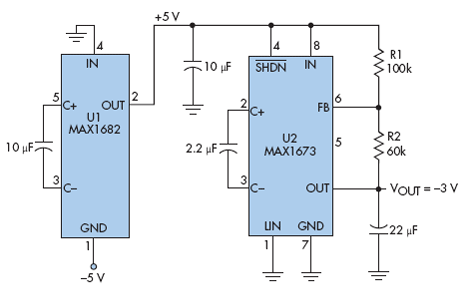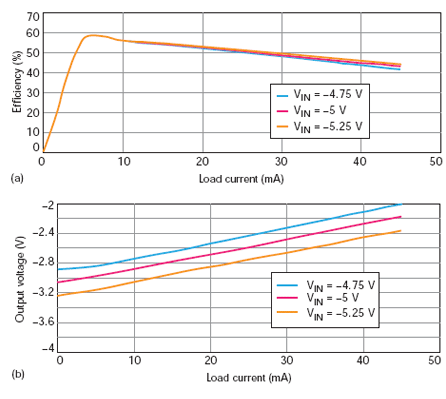Budge Ing, Ben Wolde
When you need to step down a negative voltage in a lowcurrent application, a non-inductor configuration offers two advantages: ease of use and a low number of external components. Such step-down converters can be implemented with two chargepump devices. The first produces a positive output by doubling and inverting the negative input voltage, and the second acts as an inverter to produce the desired negative output (Fig. 1). Input and output capabilities for the circuit depend on the input/output voltages allowed by the IC components chosen.

1. Using two charge-pump devices and very few external components,
this circuit steps down a negative voltage without requiring an inductor.
U1, a switched-capacitor voltage doubler, accepts the -5-V input and produces a +5-V output. A regulated voltage inverter (U2) then accepts the +5 V and produces a -3-V output. A voltage divider at U2’s output (R1/R2) provides feedback for regulating U2’s output voltage to the desired level (VOUT). The threshold voltage at U2’s FB input is factory-set to zero.
You can choose the values for R1 and R2 using:
R2 × (5 V/R1) = -VOUT
plus the condition that their sum should allow a minimum current flow of 50 µA. The accuracy of VOUT depends largely on the accuracy of the -5-V input. Figure 2 depicts the circuit efficiency and output regulation for inputs of -4.75 V, -5 V, and -5.25 V.

2. These graphs show the efficiency versus load (a) and load regulation (b)
for the circuit In Figure 1 at VIN levels of -4.75 V, -5 V, and -5.25 V.
